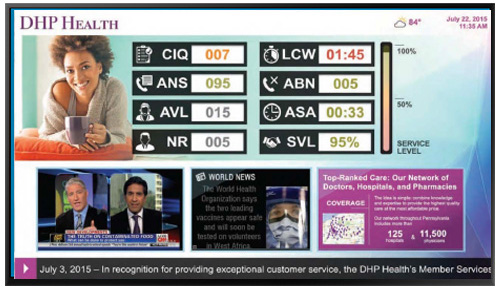Health and safety were top motives for sending employees to work from home during the COVID-19 pandemic, and no doubt remain driving factors as businesses begin to reopen workplaces. Now is the time for employers to prepare for how to transition employees safely back to the office.
But in a time of change and many unknowns, where do employers begin? Experts say the workplaces people return to will look very different, from re-evaluating the physical office space to how to keep employees following safety protocols. One thing will remain constant though and be even more important than before – the need to communicate effectively across the entire organization in a real-time (and some advise now in a touchless) manner.
While digital signage is already well known as a proven effective way to communicate with and engage employees, in the wake of COVID-19 businesses are finding more reasons to use digital signage in their workplaces.
Here are some of the top ways digital signage in the workplace can help keep people safe and informed.
1. Assess your workplace needs
Assess the workplace to ensure you have the tools and infrastructure needed to connect and communicate with employees upon entry, in common areas and at individual workstations. Consider any changes that may be necessary as a result of COVID-19 protocol.
Whether you are newly investing in digital signage, expanding existing signage or finding new ways to use the digital signage you already have, look for opportunities where you can best reach employees. It’s more efficient, more convenient, and safer to use screens as content can be remotely managed and updated without needing to touch any hardware.
Recommended digital signage locations:
Entryways – reach employees and guests with social responsibility messaging and safety expectations for entering the office.
Walkways – designate directional paths for foot traffic and manage foot traffic.
Work areas – communicate a rotation of relevant messaging to include changing work schedules and reinforcement of safety and hygiene practices.
Meeting and Conference Rooms – communicate room closures and room booking for social distancing.
Common areas (breakrooms, restrooms) – swap the bulletin boards for touchless signage to communicate latest COVID-19 news or to highlight cleaning schedules.
Cafeterias – announce closures or schedule changes and warn of employee distancing measures.
2.Keep your employees informed
Establish a sense of trust that employees’ health and safety are top priorities. Once you’ve assessed screen opportunities for your office, consider adding a wide range of communication channels – email, employee portals, app feeds, desktop feeds – all possible through a digital signage platform.
Additional communication channels allow for more targeted and customized messaging, whether by location, department or one-to-one.
- Engage in two-way communication even before employees return to the office with surveys
- Communicate the “when and how” to return to work to employee desktop and mobile devices
- Share instructions for social distancing within changed office space on department signage
- Post where to find guides and resources on digital displays and send email reminders
- Continually survey and poll employees to keep them motivated and engaged as they readjust
A well thought out communication plan will help employees be educated and stay safe as they transition back to the office.
3.Communicate with outside visitors
Determine whether outside visitors will be allowed to come into the office, and if so, what is the safety protocol they must follow?
Once you have determined what your guest and visitor policy will be, entryway signage is a great way to communicate with guests and control access to the office. Considering communicating:
- Adjusted office hours
- Guest visitor policy / types of visitors allowed
- Alternate ways to reach employees
Entryway signage is also ideal for communicating your company’s statement about COVID-19, embracing change into the company culture, and sharing social responsibility and awareness initiatives:
- Public messaging about company safety initiatives
- Company contributions supporting the community
- Recognition of essential staff within your company
4.Reinforce safety protocols
Adapt safety protocols to keep employees safe once they return to the office. Safety protocols can be adapted in various ways and technology can step in and help to reinforce, remind and reassure with relevant safety messaging.
Screening procedures for employees, visitors and contractors may use the Infrared Fever Scan Systems (IFss) or other health assessment measures.
Scanners can account for entry and exit of employees and help manage occupancy loads. Digital alerts can be triggered when there is maximum capacity per building, floor or wing.
Directional displays can be used to accommodate six feet of social distancing, providing guidance for the direction of foot traffic, one-way circulation routes and reminders of the 6-foot rule.
Cameras can be used to monitor the number of people in a place and measure distances between. Messaging on digital signage can be changed in real-time to notify people that an area is full or that social distancing is not being followed correctly.
5.Manage common areas
Keep employees safe as things get “back to normal” at the office by managing your common areas like meeting rooms, shared workspaces and cafeterias. Space planning is critical to reducing the spread of contagious disease, and solutions may be different depending on the workspace and volume of employees returning to work. Communicating your company’s solution will enable employees to take appropriate precautions.
Use digital wall displays, door displays and in-room conference displays to communicate:
- the decommissioning and re-purposing of large gathering spaces
- the change of small meeting rooms to single occupancy work areas
- new maximum capacities for specific rooms to accommodate social distancing
- room booking schedules and cleaning schedules
In a recently published “How-to guide for reopening your workplace” by Cushman & Wakefield, Bryan Berthod states “Communicate to your people that you are taking the steps and the actions to make the office safe. Don’t worry about overcommunicating. It’s important employees understand what is being done to make things safe.”
A few of the top ways digital signage can help organizations safety return employees to the workplace are outlined here, but communication should not stop once employees are back in the office. Continue to effectively communicate to not only keep employees safe, but also engaged and happy.
___________________________________________________________________________
Korbyt Anywhere provides several features and capabilities that allow communicators to automate measurement and messaging optimization for maximum engagement. Win your workplace, wherever it may be today by contacting us for more information on these techniques.









